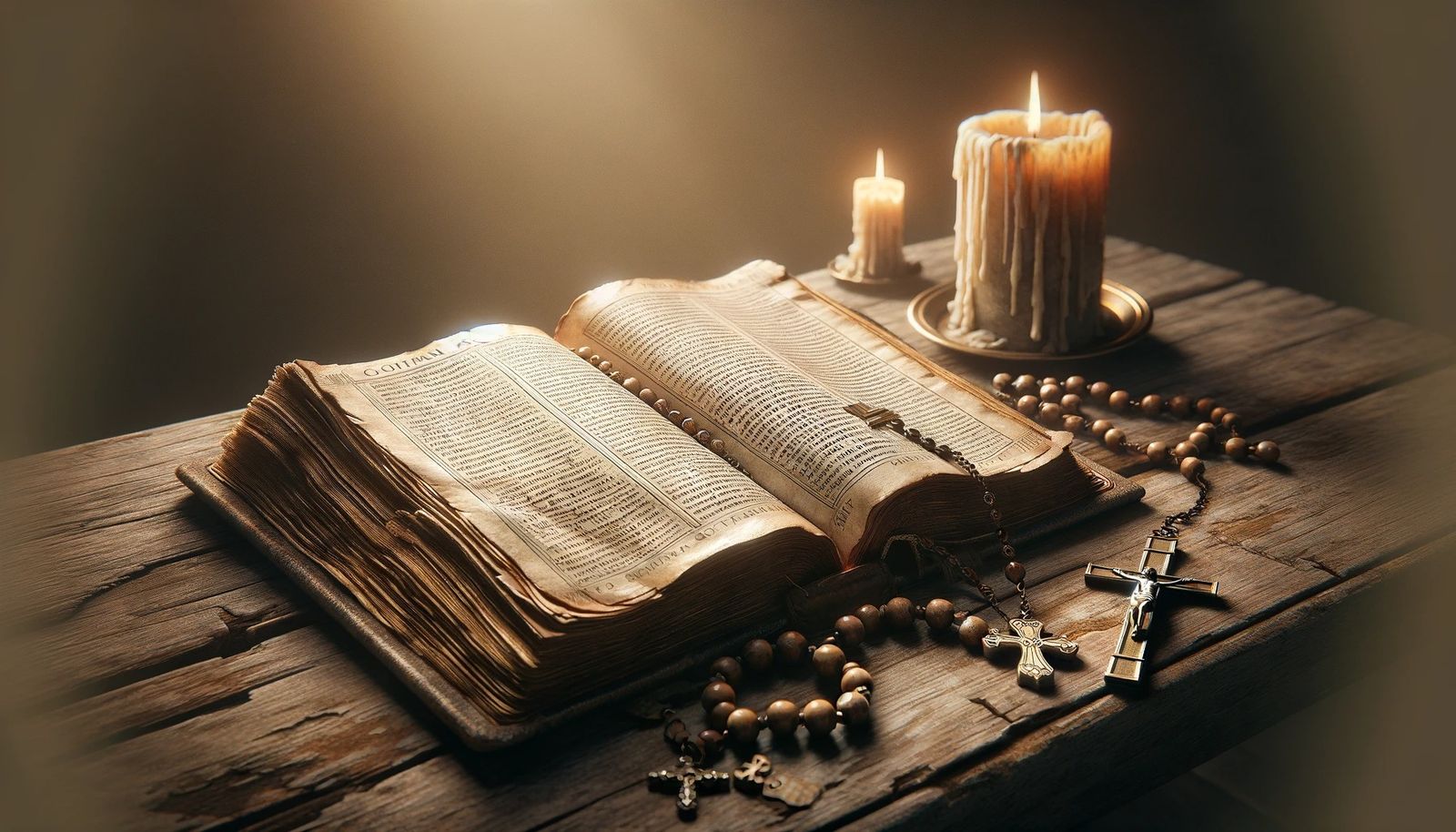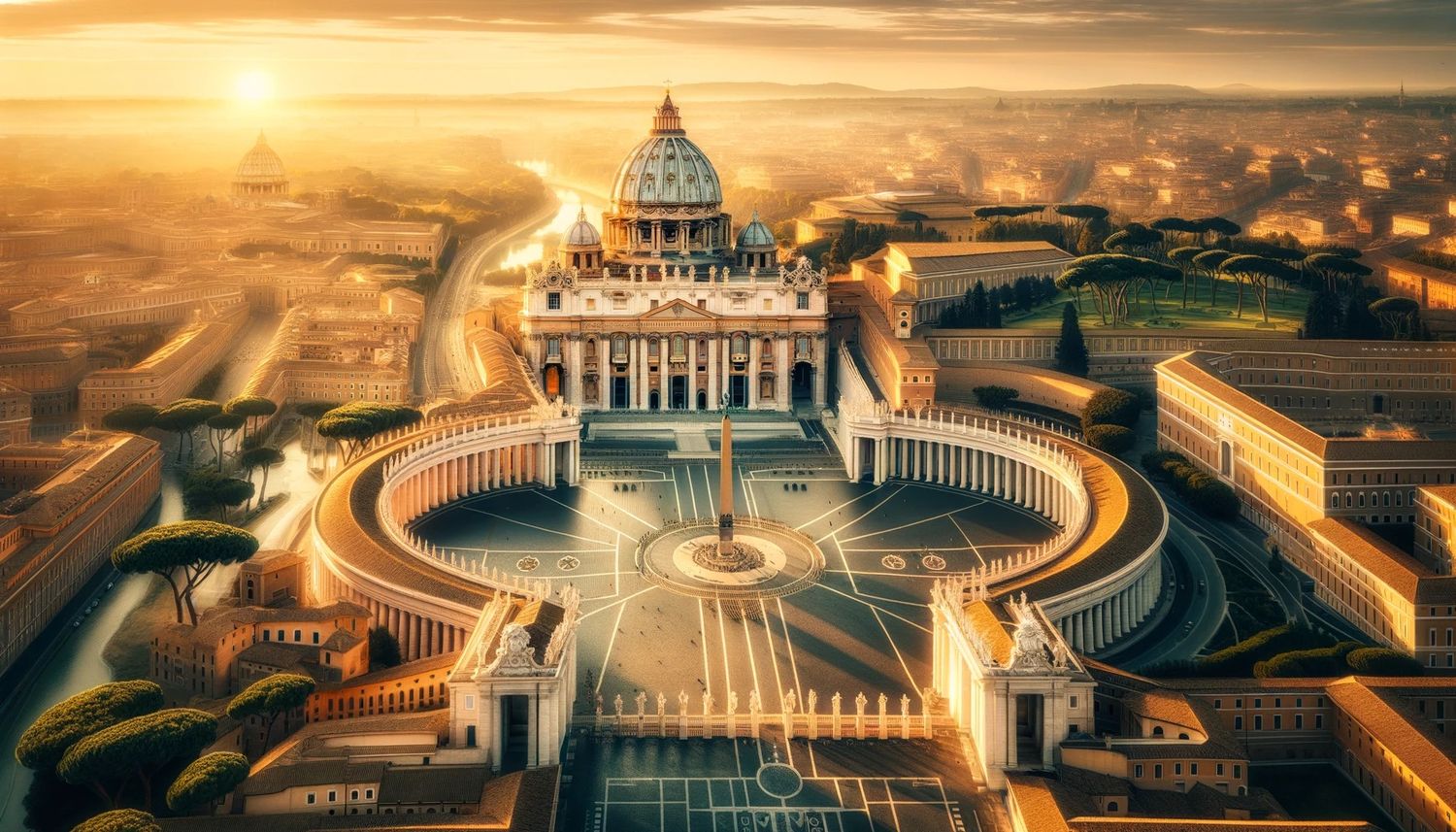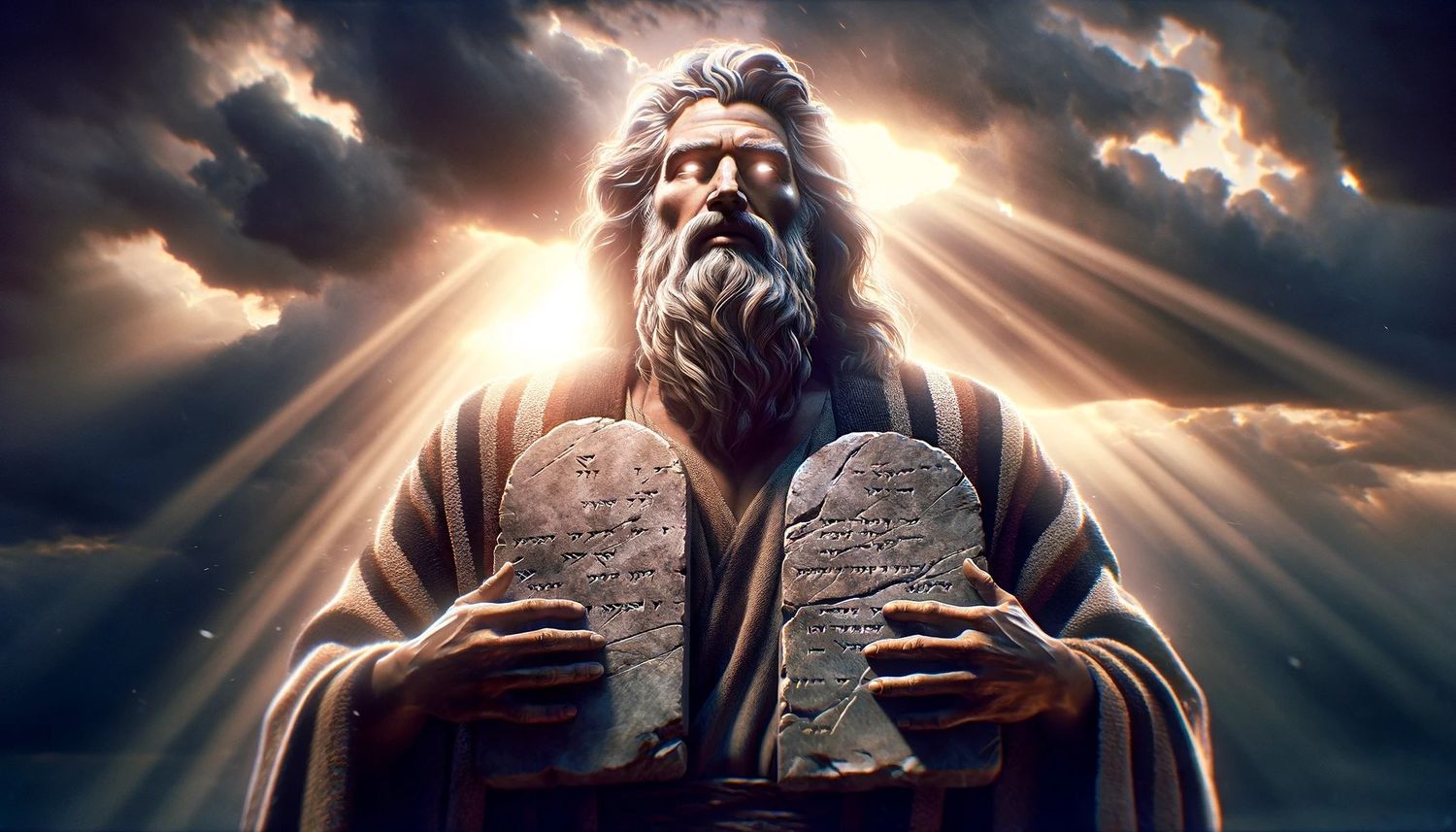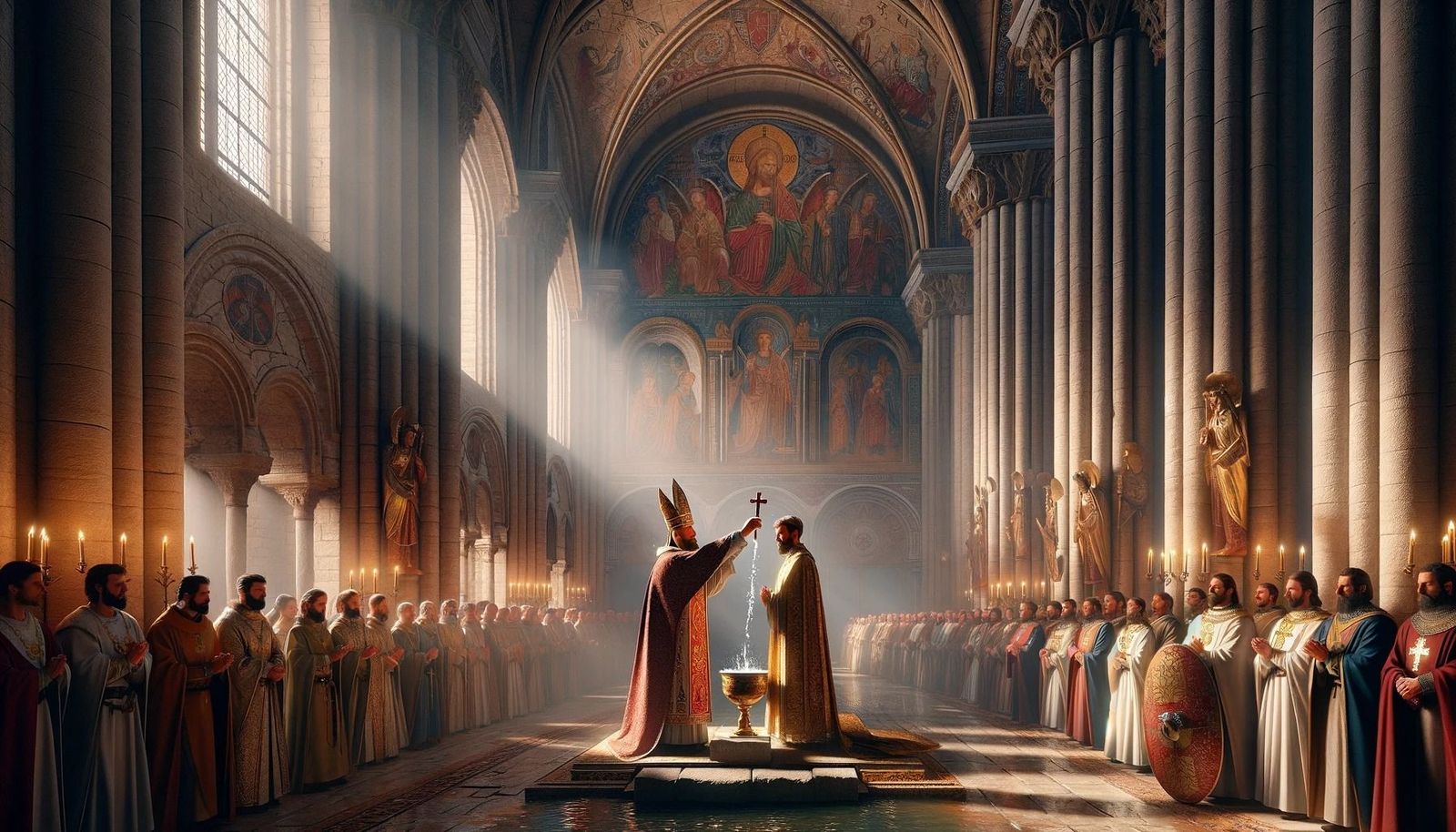Home>Theology and Spirituality>Who Restored England To Roman Catholicism?
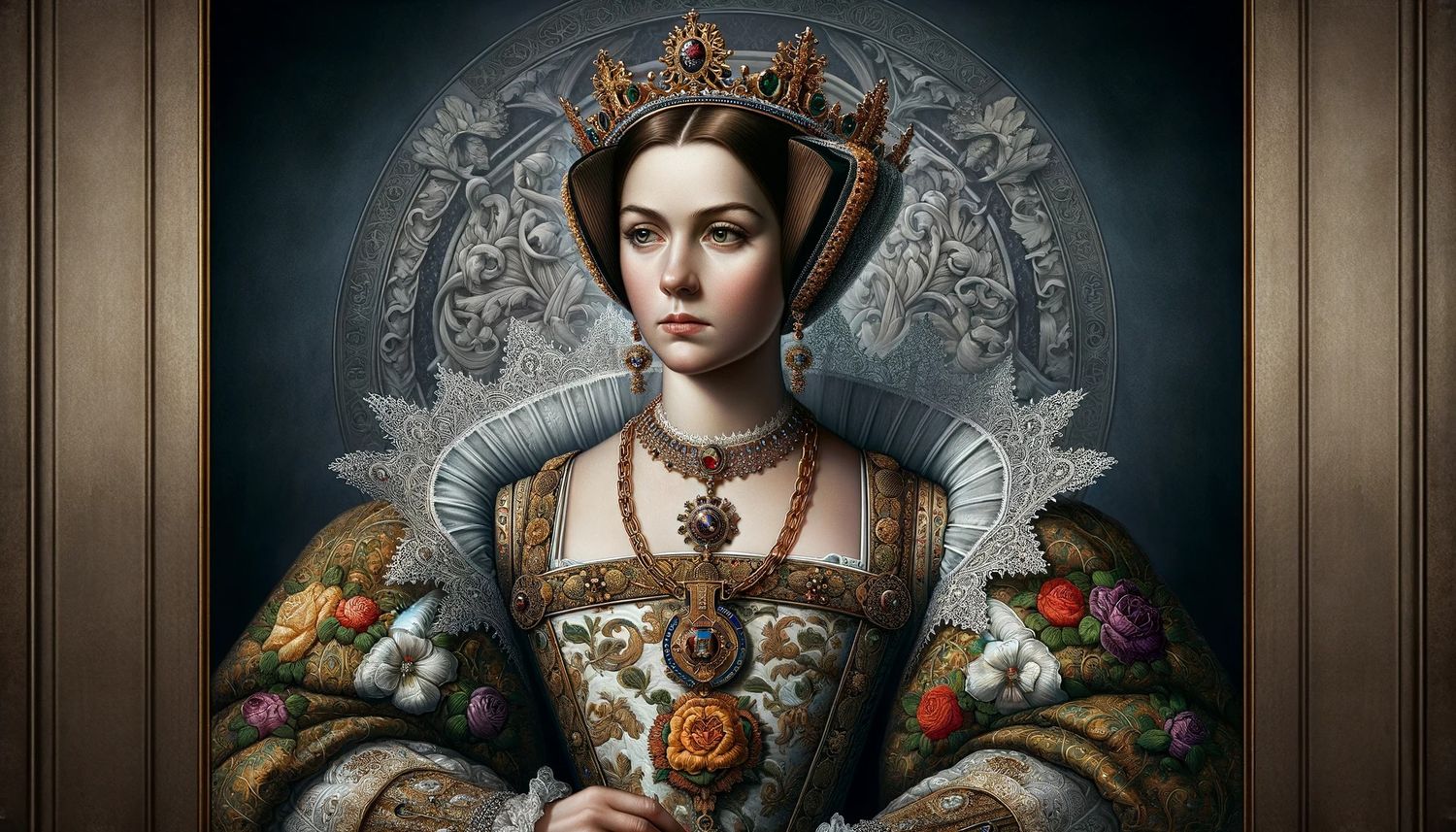

Theology and Spirituality
Who Restored England To Roman Catholicism?
Published: February 17, 2024
Ericka Andersen, an editor at Christian.net, expertly merges digital strategy with content creation, focusing on faith and societal issues. Her communication skills enhance the platform's engaging narratives, fostering meaningful dialogue on belief's impact on society.
Discover the pivotal figure who restored England to Roman Catholicism and explore the impact of their actions on theology and spirituality. Uncover the historical significance of this influential event.
(Many of the links in this article redirect to a specific reviewed product. Your purchase of these products through affiliate links helps to generate commission for Christian.net, at no extra cost. Learn more)
Table of Contents
Introduction
The restoration of Roman Catholicism in England is a pivotal chapter in the country's religious history. It marks a period of significant change and upheaval, characterized by the fervent efforts to reinstate Catholicism as the dominant faith after years of Protestant influence. This transformative era was spearheaded by a notable figure who played a crucial role in the resurgence of Catholicism in England.
The events surrounding the restoration of Roman Catholicism in England are deeply intertwined with the reign of Mary I, a monarch whose religious policies sought to reverse the Protestant reforms implemented during the reign of her father, Henry VIII, and her brother, Edward VI. At the heart of this restoration was the influential guidance of Cardinal Reginald Pole, whose strategic leadership and unwavering commitment to the Catholic faith were instrumental in shaping the religious landscape of England during this period.
As we delve into the intricacies of this historical narrative, it becomes evident that the restoration of Roman Catholicism in England was not merely a religious realignment, but a profound societal and political transformation that left an indelible mark on the country's identity. By examining the reign of Mary I and the pivotal role played by Cardinal Reginald Pole, we gain a deeper understanding of the complex dynamics that shaped this significant period in English history.
The subsequent sections of this article will illuminate the reign of Mary I, providing insights into the religious climate and the challenges she faced in her pursuit of reinstating Roman Catholicism. We will also explore the pivotal role of Cardinal Reginald Pole, shedding light on his influence and contributions to the restoration of Catholicism in England. Through a comprehensive examination of these historical elements, we will unravel the multifaceted narrative of England's return to Roman Catholicism and the enduring impact of this transformative period.
Read more: Who Founded Roman Catholicism?
The Reign of Mary I
Mary I, the daughter of Henry VIII and Catherine of Aragon, ascended to the English throne in 1553, marking a significant shift in the religious landscape of the country. Her reign, which lasted from 1553 to 1558, was characterized by a fervent determination to restore Roman Catholicism as the dominant faith in England. Mary I, often referred to as "Bloody Mary" due to her persecution of Protestant dissenters, sought to reverse the Protestant reforms that had been instituted during the reign of her father, Henry VIII, and her half-brother, Edward VI.
During her reign, Mary I faced formidable challenges as she endeavored to reinstate Roman Catholicism. The religious turmoil that had engulfed England during the preceding years had deeply entrenched Protestantism, making the restoration of Catholicism a complex and arduous undertaking. Mary I's commitment to her faith, coupled with her unwavering resolve to uphold the authority of the Roman Catholic Church, fueled her efforts to effect profound religious change throughout the realm.
One of the defining moments of Mary I's reign was the restoration of papal authority in England. This marked a significant departure from the policies of her predecessors, as Mary I sought to reestablish the supremacy of the Pope and the Roman Catholic Church within the English religious hierarchy. Her determination to realign England with the Catholic faith led to the repeal of various Protestant laws and the reinstatement of traditional Catholic practices and rituals.
Mary I's marriage to King Philip II of Spain also had far-reaching implications for the religious landscape of England. The union between Mary I and Philip II, a devout Catholic, was viewed with apprehension by many English subjects who feared the influence of foreign Catholic powers. However, the marriage symbolized Mary I's steadfast commitment to strengthening the Catholic cause in England, further underscoring her resolute pursuit of religious restoration.
Despite her fervent efforts, Mary I's reign was marked by religious strife and persecution, particularly directed towards Protestant dissenters. The execution of prominent Protestant figures and the enforcement of strict measures against those who opposed the restoration of Catholicism cast a shadow over her legacy. The tumultuous events of her reign, coupled with the resistance she encountered from Protestant factions, underscore the profound societal and religious divisions that defined this transformative period in English history.
Mary I's reign, characterized by her unwavering commitment to the restoration of Roman Catholicism, stands as a pivotal chapter in the religious evolution of England. Her determined efforts to reverse the Protestant reforms and reinstate Catholicism left an indelible mark on the country's religious identity, shaping the course of English history for generations to come. Through her resolute pursuit of religious realignment, Mary I left a complex and enduring legacy that continues to resonate in the annals of English history.
The Role of Cardinal Reginald Pole
Cardinal Reginald Pole, a prominent figure in the restoration of Roman Catholicism in England, played a pivotal role in shaping the religious landscape of the country during the reign of Mary I. Born into a distinguished family with close ties to the English monarchy, Pole's influence extended far beyond his ecclesiastical duties, encompassing diplomatic endeavors and theological scholarship that profoundly impacted the course of English history.
As a trusted advisor to Mary I, Cardinal Pole wielded significant influence in guiding the religious policies of the crown. His unwavering commitment to the Catholic faith, coupled with his astute diplomatic acumen, positioned him as a central figure in the efforts to reinstate Roman Catholicism in England. Pole's strategic counsel and steadfast dedication to the Catholic cause were instrumental in navigating the complex religious and political dynamics that defined this transformative period.
Pole's theological scholarship and erudition further underscored his profound impact on the restoration of Roman Catholicism in England. His theological treatises and writings articulated the doctrinal foundations of Catholicism, providing intellectual and spiritual guidance that resonated deeply within the religious community. Pole's scholarly contributions not only fortified the theological underpinnings of the Catholic revival but also served as a beacon of inspiration for those who sought to uphold the traditional tenets of the faith.
In addition to his theological pursuits, Cardinal Pole's diplomatic endeavors were instrumental in fostering alliances and reconciliations that bolstered the restoration of Roman Catholicism in England. His diplomatic missions, aimed at securing the support of European powers sympathetic to the Catholic cause, contributed to the consolidation of Mary I's efforts to realign England with the Roman Catholic Church. Pole's diplomatic acumen and statesmanship were pivotal in navigating the intricate web of international relations, furthering the objectives of the religious restoration.
Furthermore, Cardinal Pole's role as the papal legate in England endowed him with the authority to implement and oversee the religious reforms essential to the restoration of Roman Catholicism. His position as the papal representative empowered him to enact pivotal changes within the ecclesiastical hierarchy, ensuring the alignment of the English Church with the doctrinal precepts of Catholicism. Pole's unwavering commitment to upholding the authority of the Pope and the Roman Catholic Church solidified his pivotal role in effecting the religious realignment in England.
In essence, Cardinal Reginald Pole's multifaceted contributions as a trusted advisor, theologian, diplomat, and papal legate were instrumental in shaping the restoration of Roman Catholicism in England. His unwavering commitment to the Catholic cause, coupled with his intellectual prowess and diplomatic finesse, positioned him as a central figure in the religious transformation that unfolded during the reign of Mary I. Cardinal Pole's enduring legacy as a key architect of the Catholic revival in England continues to resonate as a testament to his profound influence on the country's religious history.
The Restoration of Roman Catholicism in England
The restoration of Roman Catholicism in England during the reign of Mary I marked a pivotal turning point in the country's religious history. Mary I's ascension to the throne heralded a fervent endeavor to reverse the Protestant reforms that had been instituted during the preceding years, seeking to reinstate Roman Catholicism as the dominant faith. This transformative period was characterized by a series of profound religious, societal, and political changes that left an enduring impact on the fabric of English society.
Central to the restoration of Roman Catholicism was the repeal of Protestant laws and the reinstatement of traditional Catholic practices and rituals. Mary I's unwavering commitment to her faith fueled her efforts to realign England with the authority of the Pope and the Roman Catholic Church, marking a departure from the Protestant influence that had permeated the country. The restoration of papal authority in England symbolized a definitive shift in the religious hierarchy, underscoring the resolute pursuit of Catholic revival.
The marriage of Mary I to King Philip II of Spain further underscored the determination to strengthen the Catholic cause in England. Despite apprehension from many English subjects regarding the influence of foreign Catholic powers, the union symbolized Mary I's steadfast commitment to advancing the Catholic faith within the realm. The consolidation of ties with European powers sympathetic to the Catholic cause, facilitated through diplomatic endeavors, contributed to the overarching objective of reinstating Roman Catholicism in England.
The restoration of Roman Catholicism was not devoid of challenges and resistance. Mary I's persecution of Protestant dissenters and the enforcement of stringent measures against those who opposed the religious realignment cast a shadow over her reign. The religious strife and societal divisions that permeated this transformative period underscored the profound impact of the restoration of Roman Catholicism on the fabric of English society.
In essence, the restoration of Roman Catholicism in England under the reign of Mary I, facilitated by the influential guidance of Cardinal Reginald Pole, reshaped the religious landscape of the country. This pivotal chapter in English history stands as a testament to the enduring legacy of religious transformation and the complex interplay of faith, politics, and societal dynamics that defined this transformative era.
Conclusion
The restoration of Roman Catholicism in England, under the reign of Mary I and the influential guidance of Cardinal Reginald Pole, stands as a transformative chapter in the country's religious history. This period, marked by fervent efforts to reverse Protestant reforms and reinstate Catholicism as the dominant faith, left an indelible imprint on the fabric of English society. The resolute determination of Mary I, coupled with the strategic leadership of Cardinal Pole, shaped a complex narrative of religious revival, societal divisions, and political realignment.
Mary I's unwavering commitment to the Catholic faith defined her reign, as she sought to reverse the Protestant influence that had permeated England. The restoration of papal authority, the repeal of Protestant laws, and the reinstatement of traditional Catholic practices underscored her fervent pursuit of religious realignment. However, the tumultuous events of her reign, marked by religious strife and persecution, revealed the profound societal and religious divisions that defined this transformative period.
Central to the restoration of Roman Catholicism was the pivotal role of Cardinal Reginald Pole, whose multifaceted contributions as a trusted advisor, theologian, diplomat, and papal legate were instrumental in shaping the religious landscape of England. His unwavering commitment to the Catholic cause, coupled with his intellectual prowess and diplomatic finesse, positioned him as a central figure in the religious transformation that unfolded during Mary I's reign. Cardinal Pole's enduring legacy as a key architect of the Catholic revival in England continues to resonate as a testament to his profound influence on the country's religious history.
The restoration of Roman Catholicism in England was not merely a religious realignment but a profound societal and political transformation that left an enduring impact on the country's identity. The complex interplay of faith, politics, and societal dynamics during this period underscores the multifaceted nature of this transformative era. The enduring legacy of this chapter in English history serves as a testament to the enduring influence of religious transformation and the complexities inherent in the pursuit of faith-based realignment within a society.
In essence, the restoration of Roman Catholicism in England, characterized by the resolute efforts of Mary I and the influential guidance of Cardinal Reginald Pole, remains a compelling historical narrative that continues to resonate as a testament to the enduring impact of religious fervor and the intricate dynamics that shape the religious identity of a nation.





